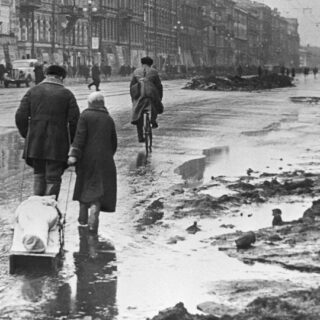
The Great Flood in Moscow took place in April 1908.
In the old, ancient times, floods also regularly occurred in Moscow: once every 30-40 years, the waters of the Moskva River, Yauza, Neglinka and small rivers broke out of the banks and walked through the streets of the capital. The rise in water level from normal was up to 7 meters.
But one day the water in Moscow rivers rose as much as 9 meters above the normal level. And on April 10-14, 1908, a truly universal flood occurred in the capital.
The Moscow River and the Vodootvodny Canal merged into one channel, the width of which was… 1.5 kilometers. Within the city limits, 16 square kilometers were flooded. The houses of Dorogomilov and Zamoskvorechye went under water up to their roofs, the walls of the Kremlin were flooded 2.3 m from the pavement level. It was a miracle that the Tretyakov Gallery was not damaged. She was saved by a prudently constructed special brick wall.
This is how an eyewitness describes this disaster: “Lampposts were barely visible from the water… The lanes were communicated with by boats, but this was extremely dangerous, since the boats were carried away by the current. And along the river rushed huge logs, haystacks, firewood, some large tubs, parts of peasant buildings and entire huts. At 2 o’clock in the afternoon a whole barge rushed past and broke down near the piers of the Borodino Bridge. Cut off by water, the inhabitants of the flooded houses waved handkerchiefs to their relatives from the roofs.”
Many had to spend the night in the attic, but there was no need to even think about saving their property. Boatmen transported residents. However, on the third day of the flood, wealthy citizens were already renting boats and sailing around the “Moscow Venice.” There was a lake on the square of the half-flooded Paveletsky station. The Crimean Bridge became an island: the entrances to it were in the water up to the window sills of the first floors.
Anecdotally: the Genner sugar factory in Dorogomilov was washed away, the Moscow River consumed 350 thousand pounds of sugar and the water in it became very sweet for a whole day. The consequences took several months to resolve. Restoration work cost almost 20 million rubles.
A mark of the record water level on a house on Yakimanskaya embankment has been preserved to this day.





